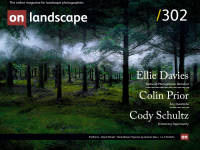Don't Look a Gift Horse in the Mouth

Cody Schultz
Although it was not until 2014 when I bought my first “professional” camera, I believe a part of me has always loved photography. I remember constantly taking pictures around the house, of my family, of our vacations, and especially of Jazmine, my family’s dog. At first, I had thought that landscape photography was boring, not understanding why someone would want to wait hours on end in a single location, just to end up going home empty-handed. Yet in 2016, I found myself doing exactly that. I found myself going on long hikes with my girlfriend, sweating and panting as we walked up steep hills to various waterfalls, often coming home only to realize that none of the photographs I took were portfolio-worthy. The memories shared, however, made it so much more worthwhile than any photograph ever could. And that, I truly believe, is why landscape photography is so special.
Over the course of the last few months, we have experienced what feels like a record-breaking amount of rain. The land around me is in a constant flux of flooding. The creek behind the house has not held so much water in many years, and the yard -- despite our best efforts -- seems to hold upon it more water than the pool itself. This has caused quite a few issues, namely that the grass in certain sections cannot get to grow, and the puppies are struggling to find spots in the yard to go about their business. If this rain were to continue on for just a few more days (it has already been raining nonstop the past three), I'm not certain the yard would be recognizable. Already there are road closures and downed trees, branches littering the yards and tearing down powerlines. The fields surrounding the house are soggy messes of mud and untilled cornstalks. What used to be thin streams of water now rush like raging rivers, flattening whatever lies in its path.
When I first witnessed this in December 2023, I began to formulate a photographic project. How could I document this flooding in a creative yet direct manner? What story could I tell through my art?
At the time, my camera of choice was a Chamonix 45F-2, a large format film camera which I paired with a Nikkor-W 210mm 5.6 lens (approximately 70mm in 35mm format) and Ilford FP-4 black and white film. This meant my process was abysmally slow and quite costly; while this helped me to more thoroughly contemplate the photographs included in this series before having exposed a frame, it also put me into a bind where I was constantly debating the worth of each composition. Instead of capturing what I saw around me, I was spending more time questioning each of my decisions, therefore letting go of multiple potential photographs. When you're working on long term projects or on singular images, this can be beneficial. But when you're attempting to document something which easily disappears the next day, this deliberation means you miss out on a lot of opportunities.

